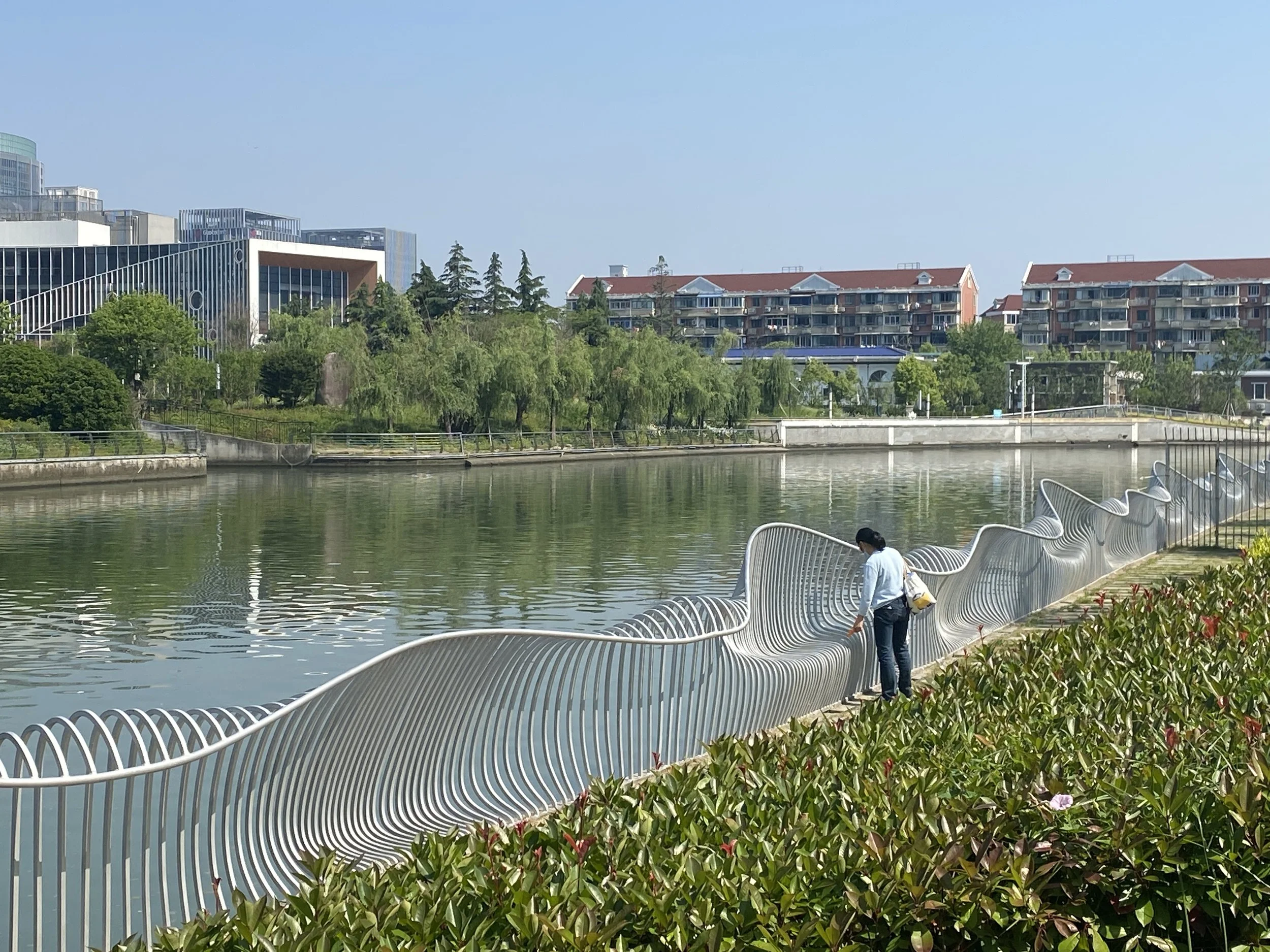Shanghai's day release
May 17, 2022
AFTER seven weeks in lockdown, the first thing I did, just after 6am today, was to try to go out. The guard looked on apologetically and said they aren’t allowed to open the doors until 8am. Thus, this celebrated easing of COVID-19 restrictions feels more like a kind of day release, rather than a full-scale liberation. The government, of course, expects us to be grateful.
At 8, I began a walk that lasted for about 80 minutes and encompassed the boardwalks alongside Suzhou Creek. Though several large residential compounds have evidently been opened up, the area remains breathtakingly quiet: I encounter a gaggle of sanitation workers, a handful of dog walkers, a few joggers, and a diminutive man with a plastic bag full of wriggling minnows, smoking a cigarette next to a sign that explicitly bans people from catching fish.
Much of the scenery is the same, though there are QR codes pasted on every building - another part of the high-tech medical industrial complex - and there’s a new permanent testing station across the road. The pedestrian bridges across the river are blocked by the ubiquitous blue fences, as are the steps leading up to the massive viaducts. One thing is clear: this is not the end of lockdown. This is the extension of China’s zero-COVID infrastructure into every aspect of city life, and the normalisation of the lockdown mentality in the minds of every citizen. As The Prisoner’s Number Six discovered, you can leave the Village, but the Village never leaves you.
I walk back to my compound. The guards won’t let me in, and say I have to enter through the opposite entrance. One has to admire their dogged, unyielding pursuit of maximal inconvenience.
For years, we pretended that Shanghai was somehow different, that it was running on its own particular rails. It isn’t: if this COVID-19 outbreak has proved anything, it has proved that this city is an inextricable part of the same system that incarcerates and tortures Uighurs in concentration camps, that harvests the organs of religious cultists, that thinks nothing of ripping a child away from its mother in order to serve some brutal political objective set by the commissars of Beijing.
For years, we got away with the illusion that Shanghai’s long exposure to overseas influences, and its vital role as China’s financial capital, gave it a sort of cosmopolitan panache that also served as a carapace, protecting it from Beijing’s withering totalitarian glare. This illusion has now been stripped away.
With the foreign media excluded, and in the absence of any other searching questions, the emphasis in the daily government press briefings is always the “recovery of production”. This is all that matters in the eyes of the Chinese Communist Party: the Stakhanovite restoration of economic output through the creation of punishing zero-COVID “closed loops” that force workers to sleep in tents, with no time or place to rest, or gather, or complain about the idiocy of the authorities.
We have also suffered a barrage of propaganda about people sacrificing and suffering and “eating bitterness” in order to deliver food supplies. It feels as if the gerontocrats are trying to recreate the hardships of the 1960s. At the same time, the regime’s censors are increasingly hypervigilant, scrubbing social media clean of any sort of complaint. In my twenty-odd years here, China has rarely been darker.






